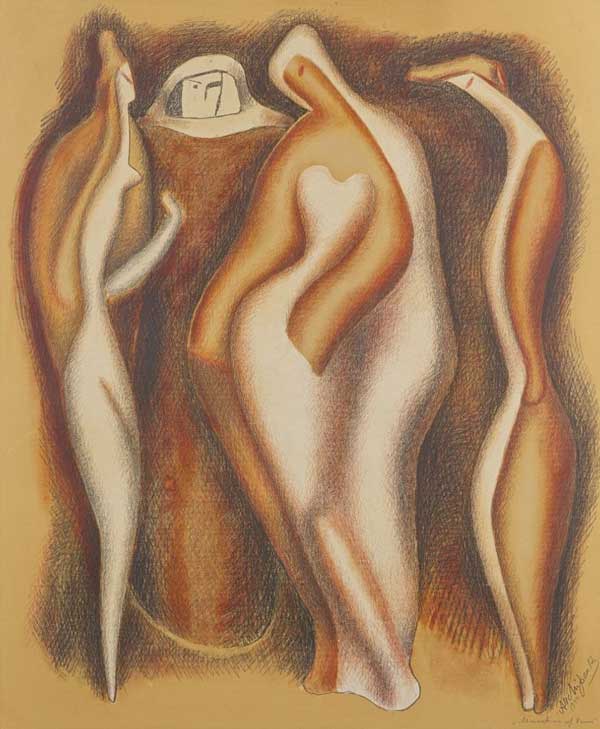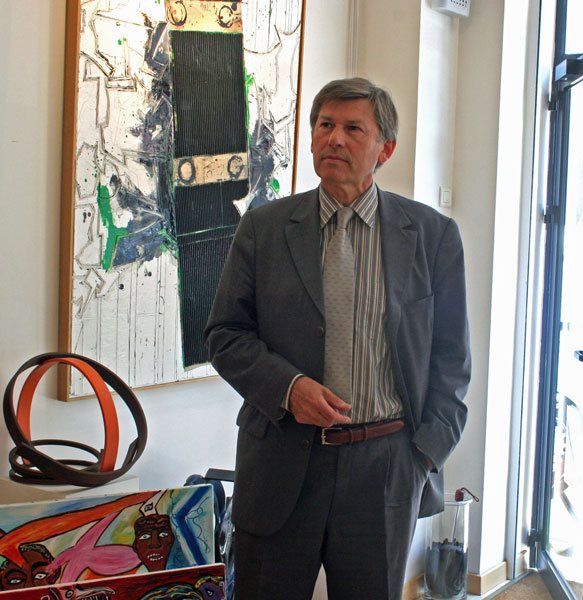12-05-2024- Alexander Archipenko (1887–1964) was a Ukrainian born sculptor. Archipenko attended the Kiev Art School to study painting and sculpture. The Byzantine icons, frescoes, and mosaics in Kiev inspired Archipenko's earliest works. After moving to Paris in 1908, he studied at the Ecole des Beaux Arts and frequently visited the Musée du Louvre, where he was drawn to Egyptian, Assyrian, ancient Greek, and early Gothic sculpture. Archipenko began exhibiting with the Cubists and other avant-garde artists at the Salon des Indépendants in 1910, opened his own art school in Paris in 1912, and joined an artist collective circle known as the Section d'Or, a group that included Léger, Braque, Gris, and Picasso. Alexander Archipenko working on Torso in Space, 1935; image courtesy of The Archipenko Foundation Influenced by Picasso and Braque, Archipenko developed a sculptural form of Cubism using interlocking and overlapping solids and sculptural voids to show various views of the figure simultaneously. Archipenko was interested in breaking the figure into geometrical forms and, like the Futurists, sculpted figures in motion.
Archipenko's legacy of experimentation is characterized by an unconventional mix of materials such as metal, wood, glass, wire, and paint and mixed media works combining bronze, granite, and turquoise. In 1924, he invented and patented the Archipentura, a new kinetic painting/sculpture mixed media art form.
 |
|
Alexander Archipenko, Admiration of Venus, 1944. Graphite and gouache on paper |
|
Although Archipenko is known primarily for his sculptures, he is by definition a mixed media artist. Admiration of Venus epitomizes a consistent theme in his oeuvre, as well as the history of art: the female nude. Heavily inspired by Byzantine icons, Archipenko's nude forms are demonstrative of the stylized idealism that characterized the art from the period. His modernist adaptation of historical aesthetics proved influential to the development of avant-garde sculpture. While this work on paper is not a study for a particular sculpture, the principle remains evident. The figures, or Venuses, are delicately posed on brown paper; their curves and concavities are highlighted by the masterful rendering of overlapping forms. |
|
Rosenberg & Co. 19 East 66th Street New York, NY 10065 212 202 3270 |



